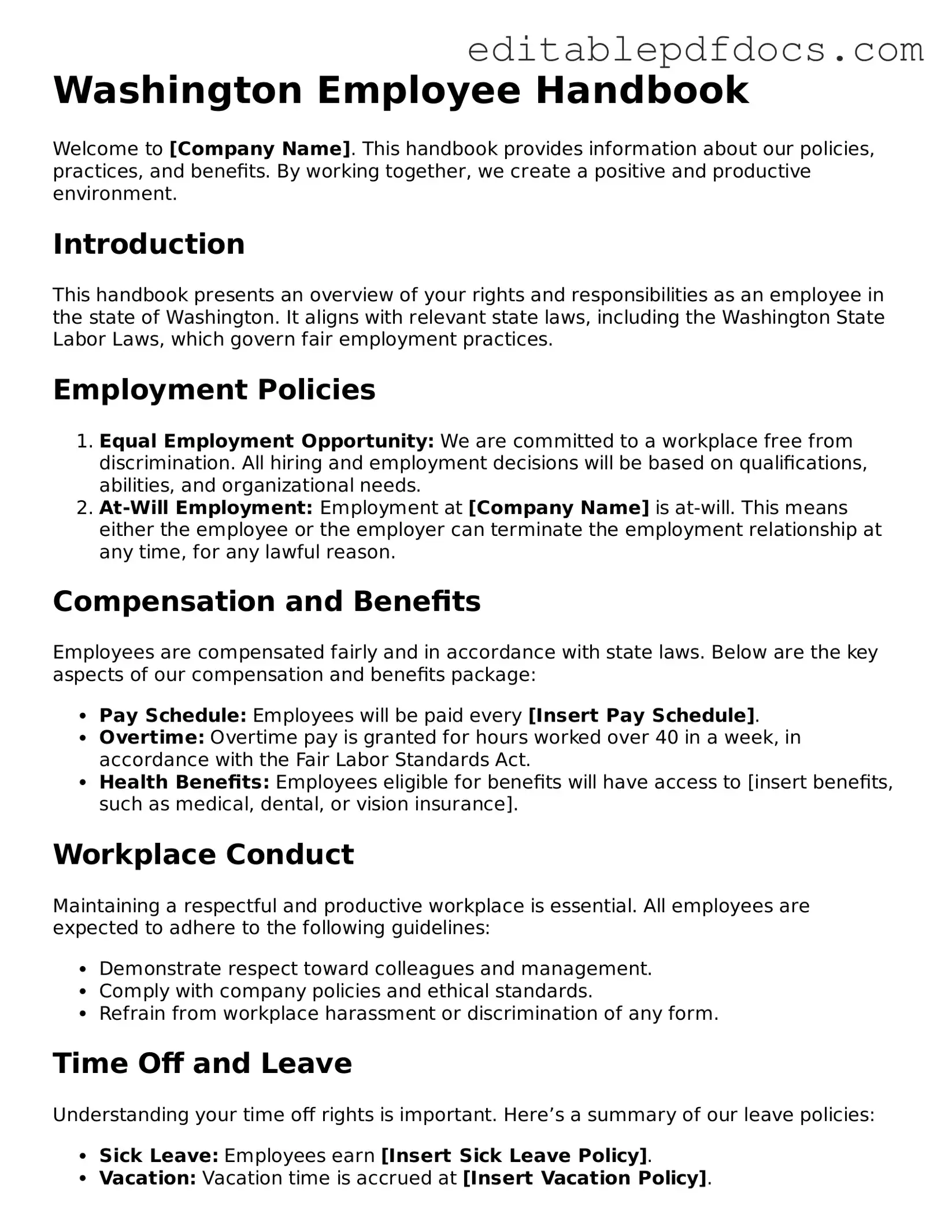In the dynamic landscape of employment in Washington State, the Employee Handbook serves as a vital resource for both employers and employees. This comprehensive document outlines the essential policies, procedures, and expectations that govern the workplace environment. It encompasses a variety of topics, including workplace conduct, attendance policies, benefits, and employee rights, ensuring that all parties are well-informed. Additionally, the handbook addresses important legal compliance issues, such as anti-discrimination laws and workplace safety regulations, fostering a culture of respect and accountability. By clearly articulating these guidelines, the Employee Handbook not only aids in the smooth operation of the organization but also helps to mitigate potential conflicts and misunderstandings. As a living document, it can be updated to reflect changes in laws or company policies, making it an indispensable tool for maintaining clarity and consistency within the workplace.
